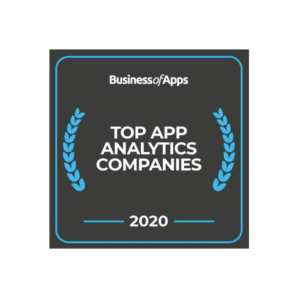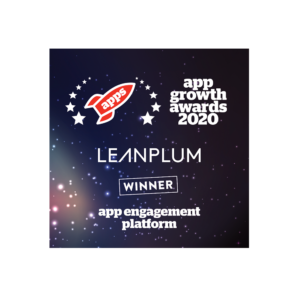In-App Messaging
Interested in Leanplum?
What is in-app messaging?
In-app messaging sends messages that are triggered when a user interacts with your app. These messages allow you to engage your users at different times throughout the customer journey. You can use them as part of your onboarding, marketing, and customer support programs.
By combining in-app messaging with data and analytics within your platform, you can send personalized messages with relevant visuals, copy, and content tailored to the users’ demographics and in-app behavior for better engagement and improved user experience.
What is the difference between push notifications and in-app messages?
Push notifications communicate with the user outside the app and are used to invite them to return to and re-engage with your app. In-app messaging happens when users are already inside the app and focuses on enhancing their current session within your app.
How does in-app messaging work?
In-app messages can appear as pop-ups, yes/no prompts, and interstitials. They generally work to engage users who have opened your app by sending messages that offer information, rewards, or monetization opportunities.
For example, you can use informative in-app messaging during the onboarding process. Your in-app messages can guide users through interactive tutorials or give customers more insight into the app’s features, capabilities, and latest updates.
Reward messages present your customers with some incentive to keep using the app. Quite common in gaming apps, you can trigger messages that display a player’s earnings at the end of each level to encourage them to continue playing. Rewards can also come in the form of loyalty incentives for your most frequent shoppers.
Finally, monetization messages invite users to convert (or purchase a product). This often starts with a push or email notification outside of the app. The notification, then, brings users to a landing page inside the app that offers an incentive. When users click on this call to action, they’re directed to a checkout page.
What are the benefits of in-app messaging?
In-app messaging offers benefits to both your customers and business.
Personalized messages and experiences through in-app messaging can help your users feel more engaged, rewarded, and primed to convert.
- Customers can be kept in the loop about product updates and new features relevant to their needs.
- Interactive tutorials can guide them on using the app and prevent potential friction points in the app’s user experience.
- They can receive relevant and customized offers and recommendations based on their preferences and previous in-app actions.
- Special rewards or game packs can help game players advance to higher levels.
Through in-app messaging, your business will see higher customer satisfaction and retention, improved conversion rates, greater customer lifetime value, and higher ROI.
- In-app messages are highly customizable, so you can create messages with a look and feel that reflects your brand and smoothly blends with your app experience — whether through full-screen pop-ups or overlays that are native to your app’s UI.
- You can customize the copy and content to target specific user segments for increased engagement.
- Analytics provide insights into personalizing your in-app messaging campaigns and understanding which campaigns or elements perform best. This way, you can optimize future advertising efforts for better results.
You can use in-app messaging to get more opt-ins for push notifications (allowing for engagement outside the app) and to request App Store reviews.
For example, StumbleUpon increased their 5-star ratings in the App Store by prompting customers with an in-app message asking if they were enjoying the app. They offered users a simple yes/no option to reply. Those who said ”yes” were invited to rate the app in the App Store, while those who said ”no” were sent to a landing page to leave feedback. This enabled StumbleUpon to make fixes to improve customer experience.
In-app messaging examples
First-time user tutorials
Onboarding messages, interactive tutorials, tips-of-the-day — there’s a good chance your app uses one of these instructional flows for new users. In-app messaging is frequently used to implement onboarding flows without hampering the usability for more seasoned users.
App updates
In-app messaging provides a convenient way to inform your audience of changes as soon as they launch the app after an update. Some updates consist of bug fixes and UI tweaks that aren’t worth calling attention to. But what if you’ve launched a new feature or revamped the layout? If it’s a major update that’ll improve the app’s everyday user experience, customers want to know about it.
In-app messaging with rewards
You can use in-app messages inside your game to give players a heightened sense of reward. Let’s say players earn a given number of coins for completing a level. While you could simply add the coins to their in-game wallet, displaying their earnings in a popup at the end of the level is more effective. So, the player can celebrate what they’ve accomplished and what they’re getting for it.
In-app messages for monetization
Achieving a high DAU count is impressive, but it doesn’t pay the bills. Users must monetize for an app business to succeed. It can be challenging for apps that do this mainly through purchases rather than ads to convert fans into customers. Many users need an extra push to convert, and you can use in-app messaging to provide that extra nudge.
To get the most out of in-app messaging, check out our blog on Top 5 In-App Messages for Mobile Game Monetization and our Guide to the Different Types of Mobile Messages.






